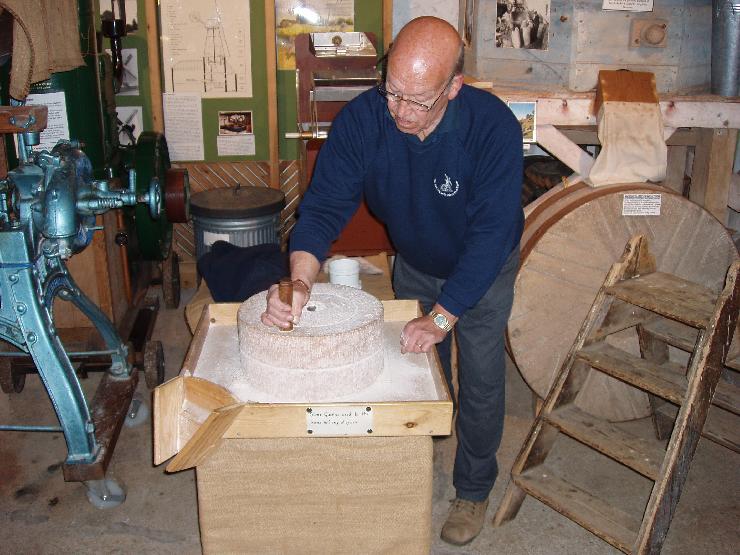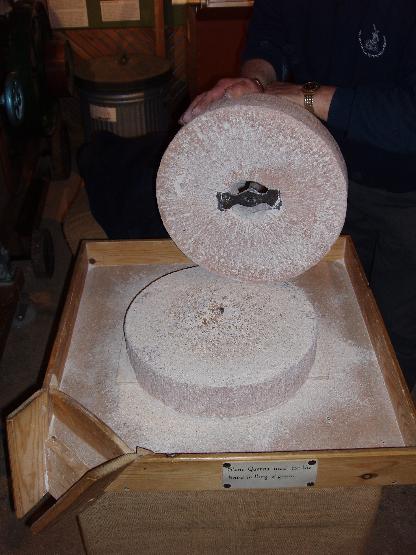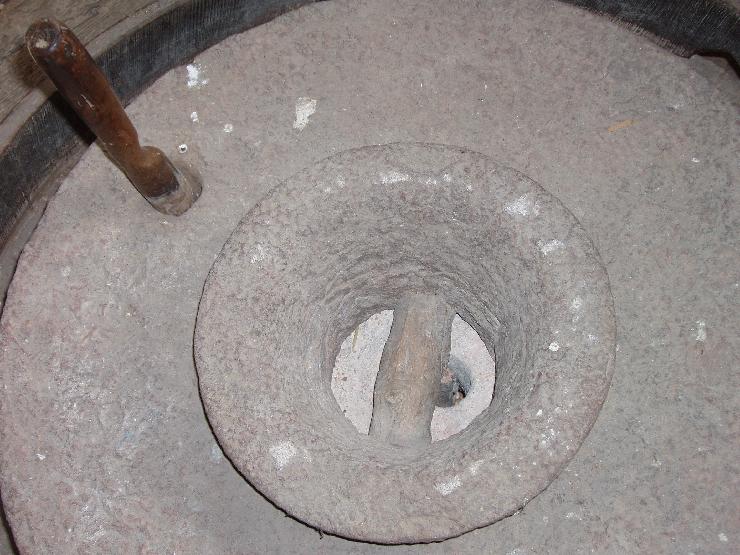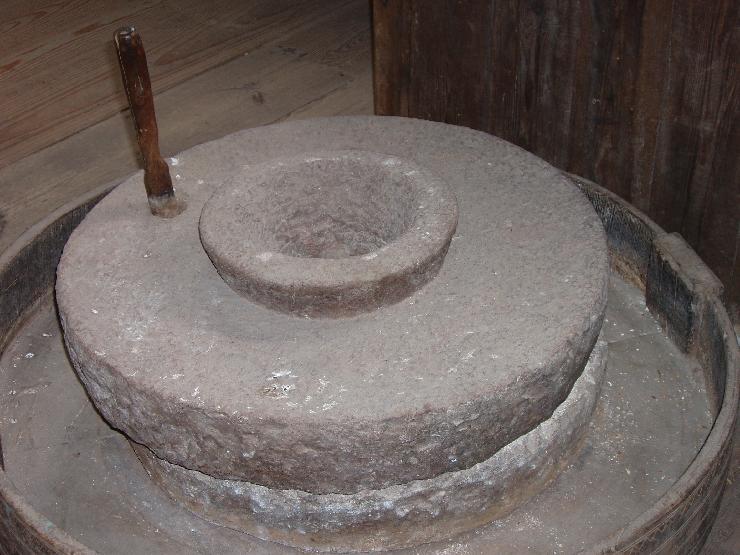|
|
Millstones from England
The main working component of a gristmill is the millstone. While on one hand they are relatively similar, the variation within each type is immense. Millstones survive long after they are no longer used in milling because they are such massive pieces of stone. Common uses for them have included paving stones, building materials, and stepping stones or front stoops for the miller's house.
On this page, images of millstones from all over England offer a glimpse of the variety one may encounter. In addition, we offer looks at some alternate forms of millstones used in two related industries: cidering and gunpowder making. In addition, we also show closeups of some of the mechanisms for mounting millstones.
Millstones themselves come in two basic types, a solid stone made typically of sandstone or granites, or a composite stone, the most valuable of which were the French burr stones. Monolithic stones were carved from solid pieces of stone; preparation for use as millstones involved the shaping into smooth round pieces followed by cutting lines of varying patterns into them. The composite stones were made of a number of smaller pieces set into a plaster of paris matrix and stoutly hooped with iron bands.
(Larger photos will appear in a new window)
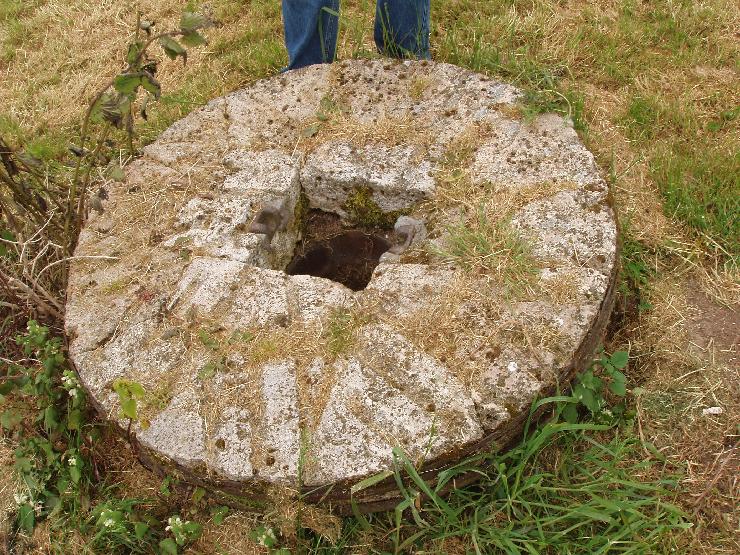
Avoncroft
A French burr stone. You can just see the iron hoops on the edges.
|
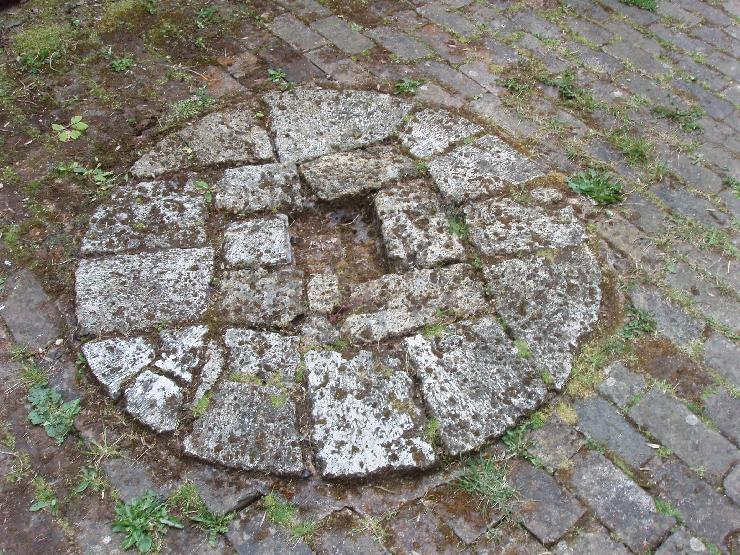
Daniels Mill
Having run its useful life, this burstone was set into the pavement in the mill courtyard.
|
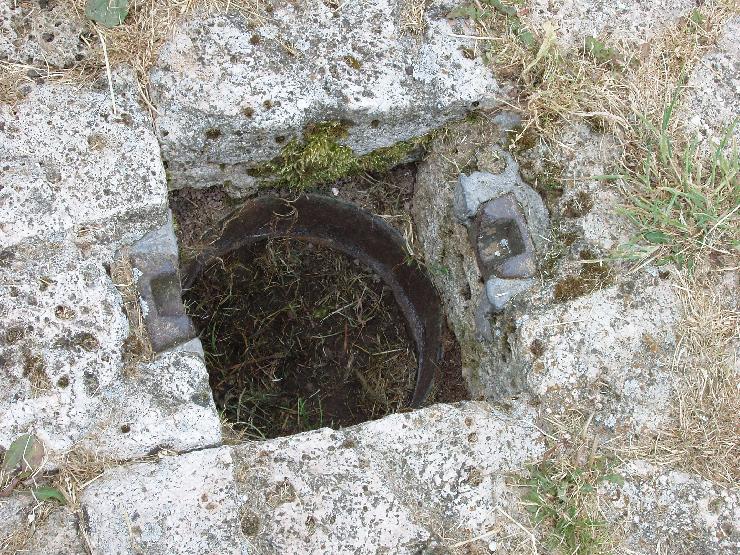
Avoncroft
Here on the top face of a stone, you can see the square socket cut into it to take the square drive shaft.
|
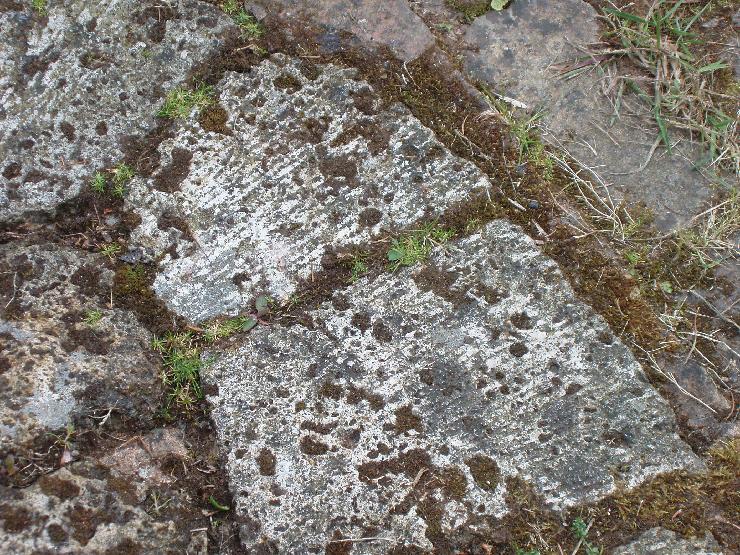
Daniels Mill
A closeup of the individual stones set in the French burr
|
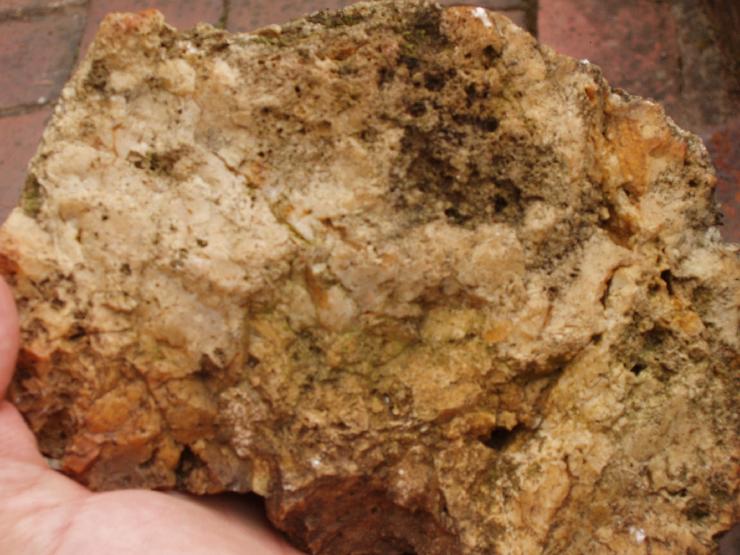
Daniels Mill
This piece of French burr was broken off - you can see that it is very porous, but still very hard.
|
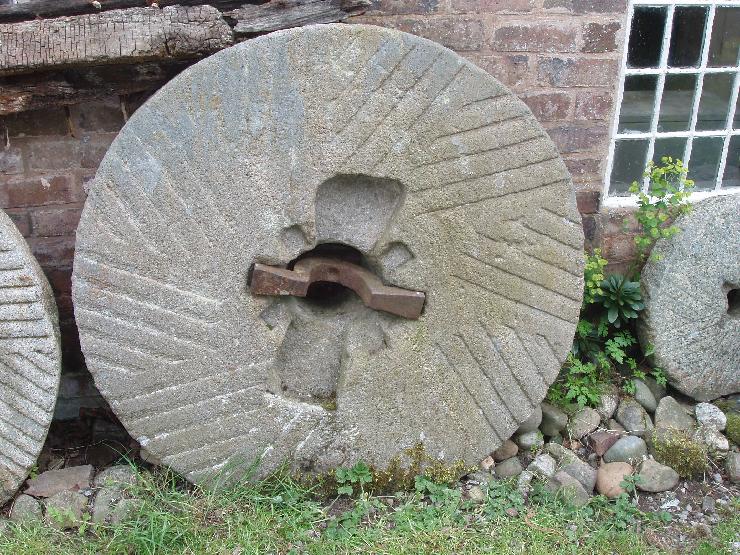
Daniels Mill
Another millstone at Daniel's Mill that shows how it has been re-rhynded at least twice. Rhynds are the metal arch that you can see in place as it supports the whole millstone. The millstone pivots about the rhynds. These new channels in which the rhynds fit have been cut as the old ones apparently wore out.
|
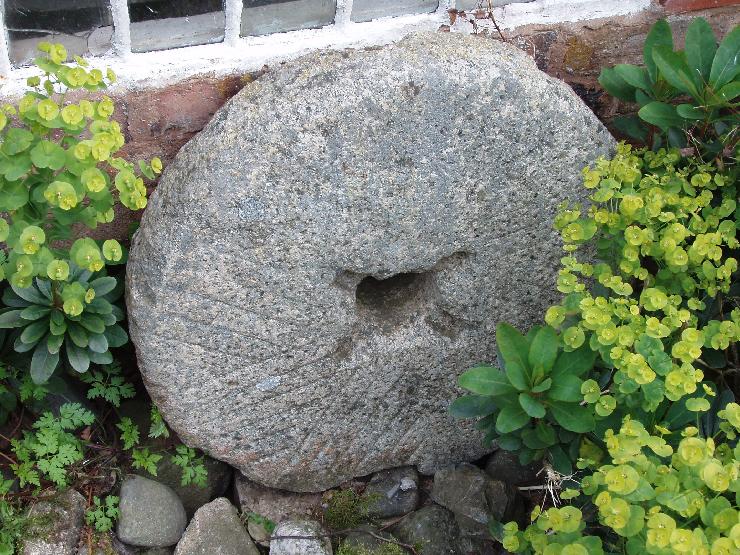
Daniels Mill
Another millstone with two rhynd slots in the garden.
|
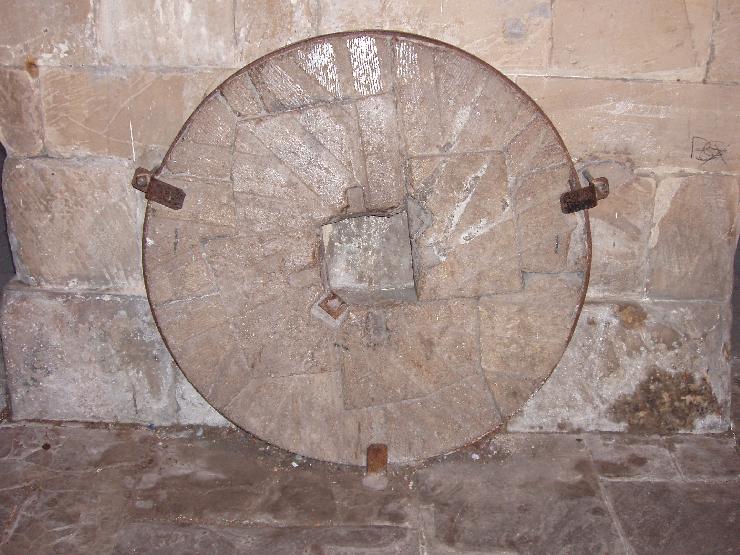
Ludlow Stone
Here, affixed to the wall in the town hall of Ludlow is a millstone with an inordinately large central (and square) hole.
|
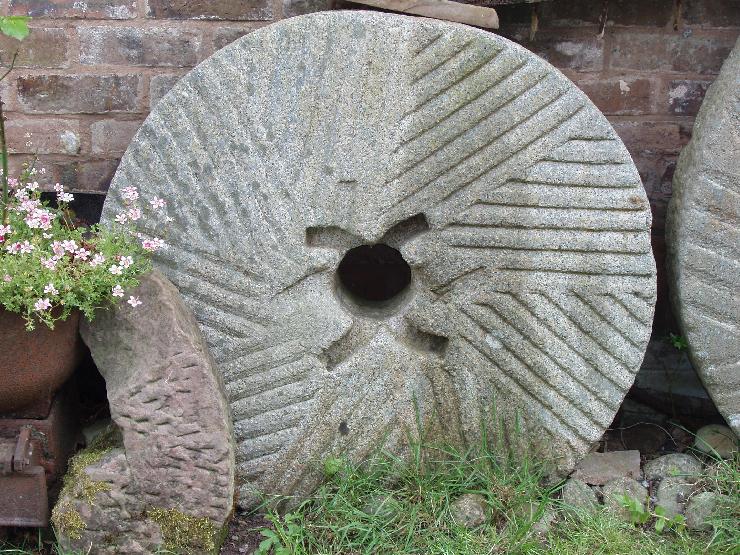
Daniels Mill
Another fine stone made of (I believe) Peak District granite. The curved slots for the rhynd are in fact for one that was shaped like a pair of back-to-back parentheses: )(
|
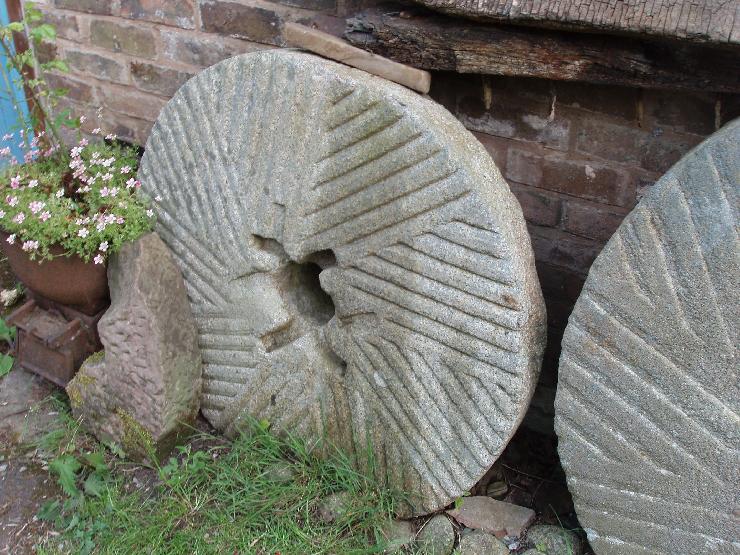
Daniels Mill
Millstones abound around mills that have ben operating for many years, as they are the primary item that wears out, but is not of much use otherwise...
|
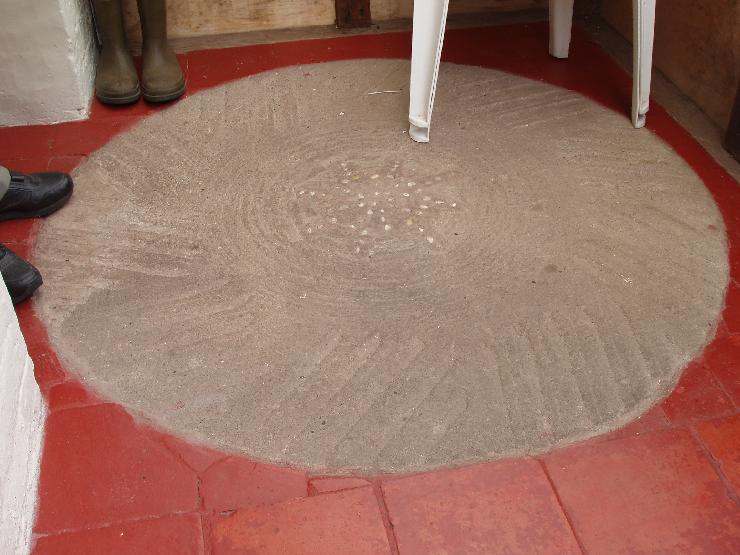
Daniels Stoop
... unless of course you set it in to the front stoop...
|
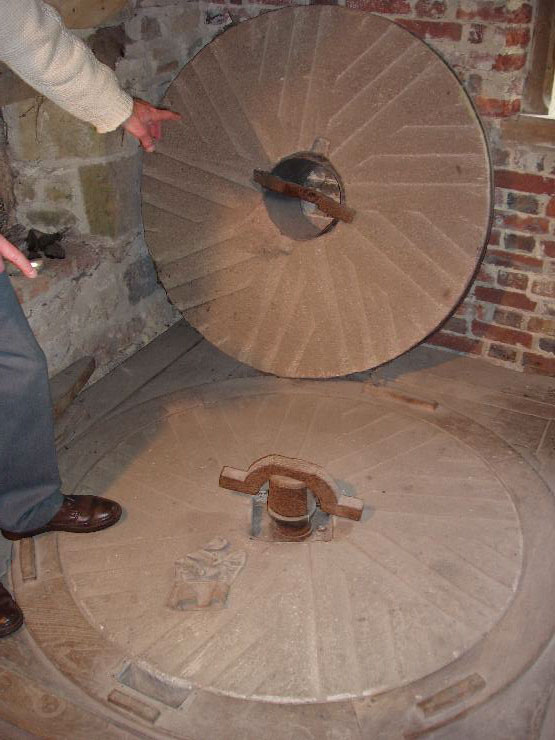
W & D
...or perhaps in the floor of the mill itself.
|
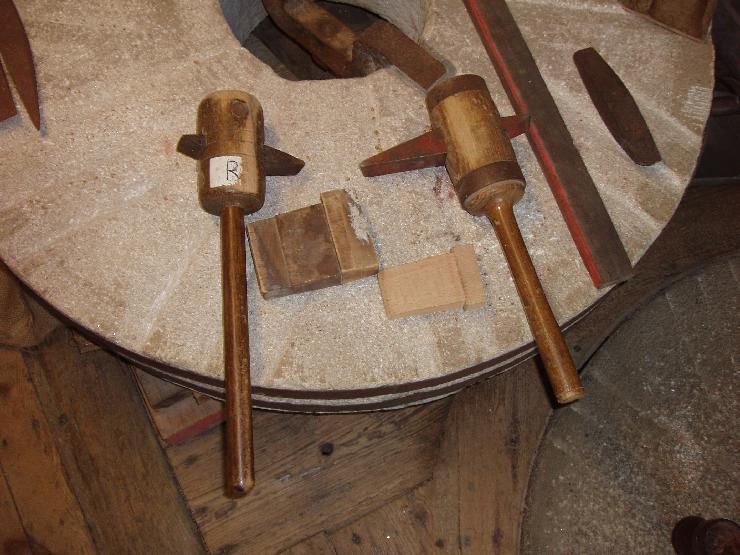
Eling
A number of millstone dressing tools on display at the Ealing tide mill.
|
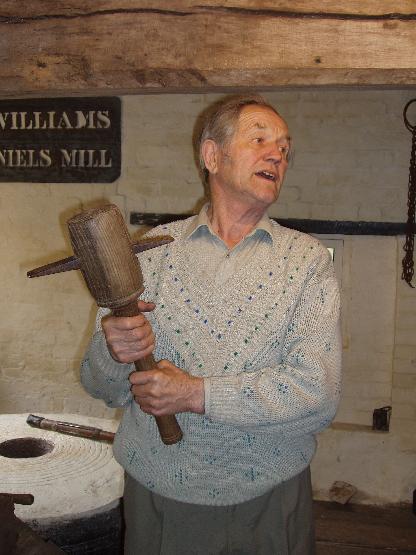
Daniels Mill
Peter, the miller at Daniel's Mill, demonstrates the heft off a millstone pick.
|
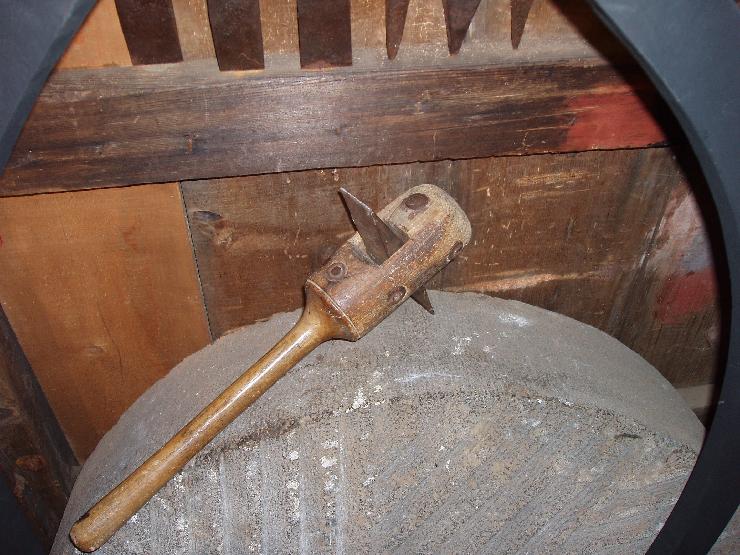
W Blachington
A millstone pick on display at the West Blachington windmill, Sussex.
|
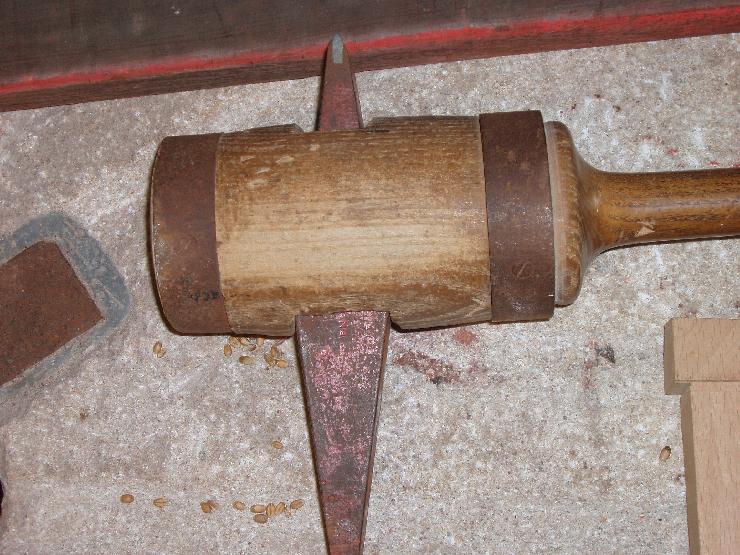
Eling
Closeup of the mill pick at Ealing. Notice how the iron pick is wedged through the wooden head. The head give more mass to the pointed end to chip the stone grooves.
|
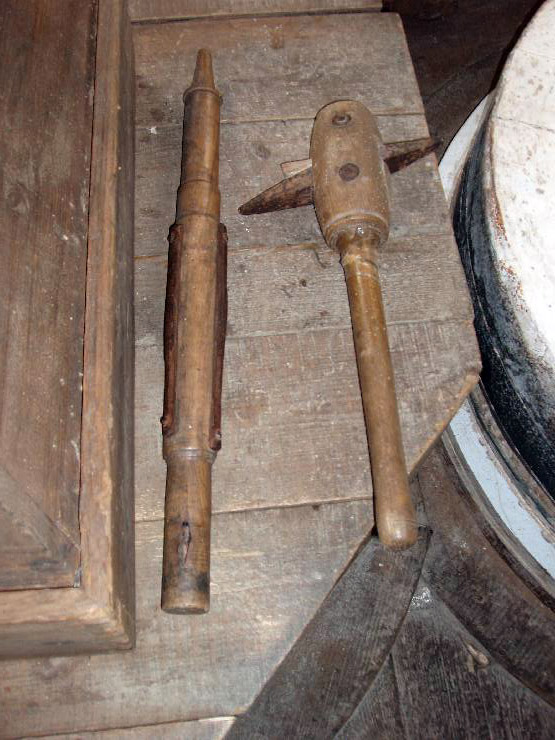
Daniels Mill
This was an interesting pick in that it had its iron pick put through the handle at an angle. Millstone dressers undoubtedly had their own idiosyncrasies
|
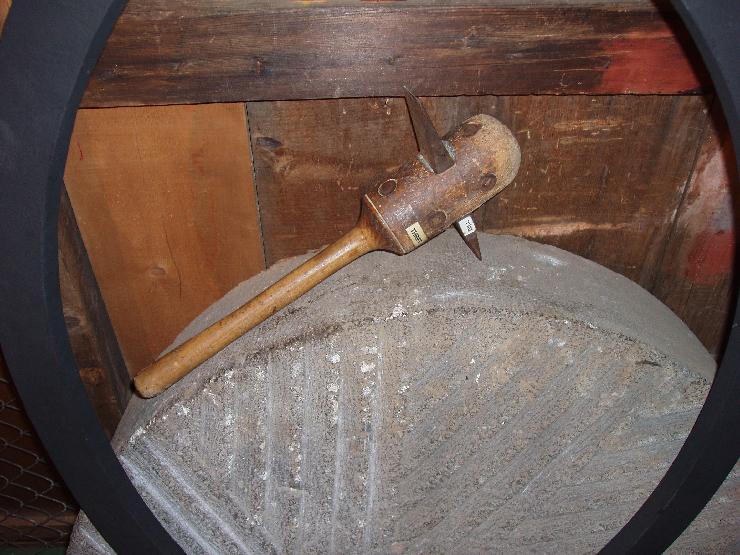
W Blachington
Another view of the same, above.
|
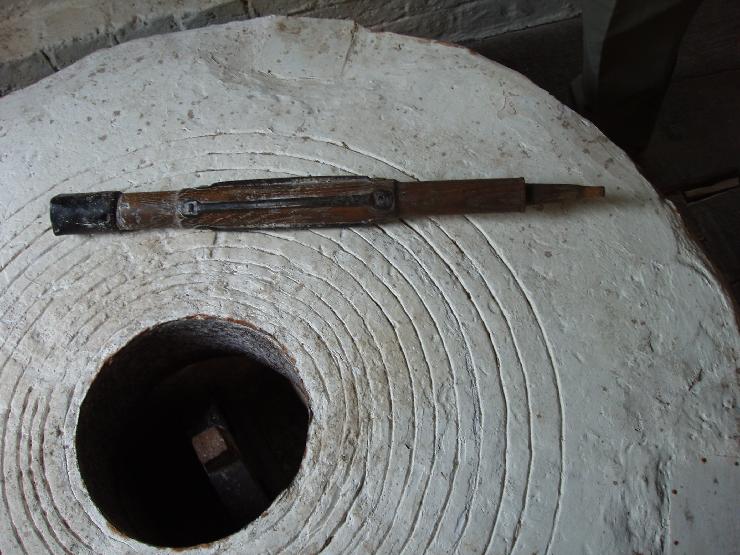
Daniels Mill
The iron...
|
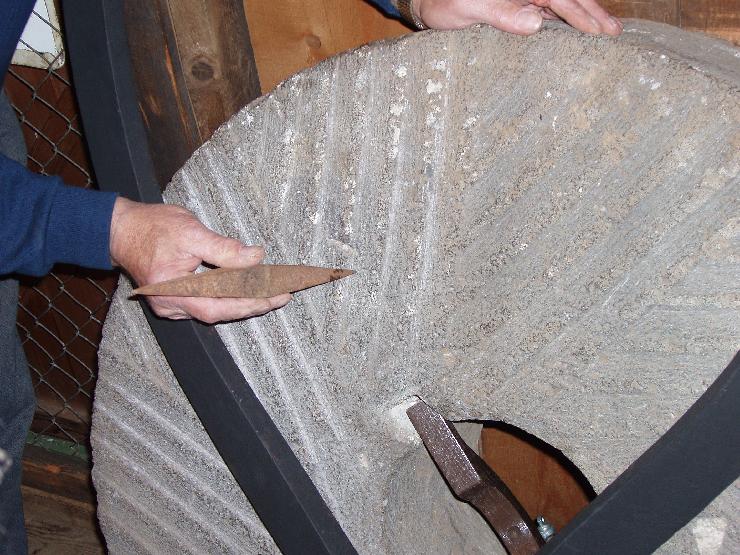
W Blachington
Peter demonstrates how the "bick" chips out the fine parallel lines in the millstone.
|
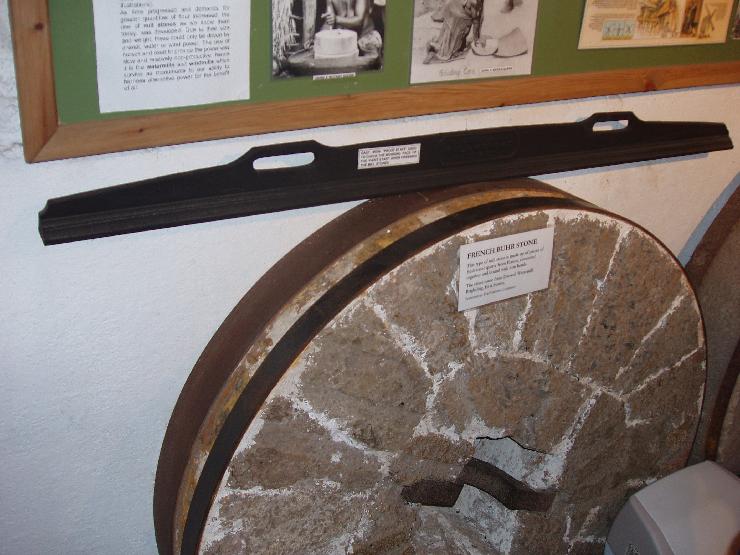
W Blachington
One of the few stone levels we saw on display on a French Burr Stone. The level was a piece of cast iron that was used to find the high spots on the stone.
|
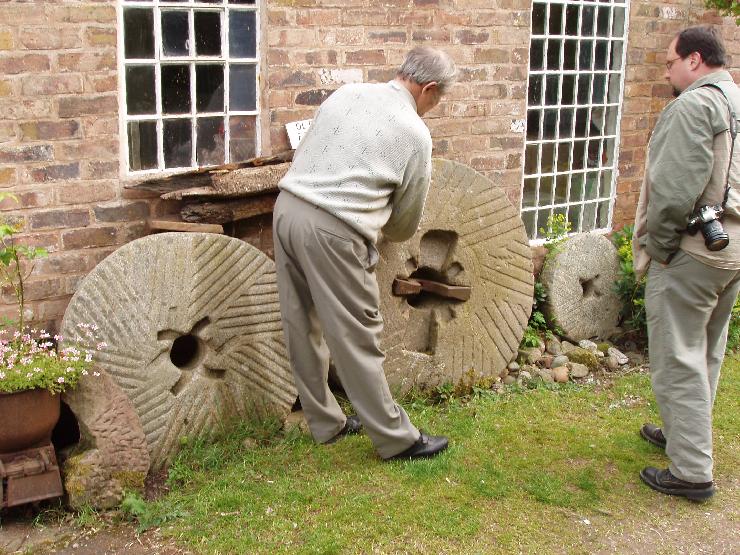
Daniels Mill
The proprietor of Daniel's Mill near Bridgenorth described how a mill rhynd is set into the stone, and in the case of this one, re-set... and set yet again.
|
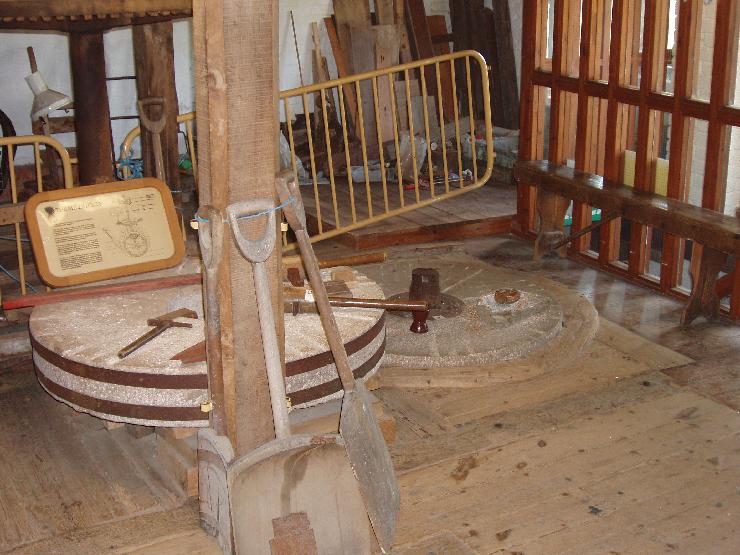
Eling
The tools of milling and a stone.
|
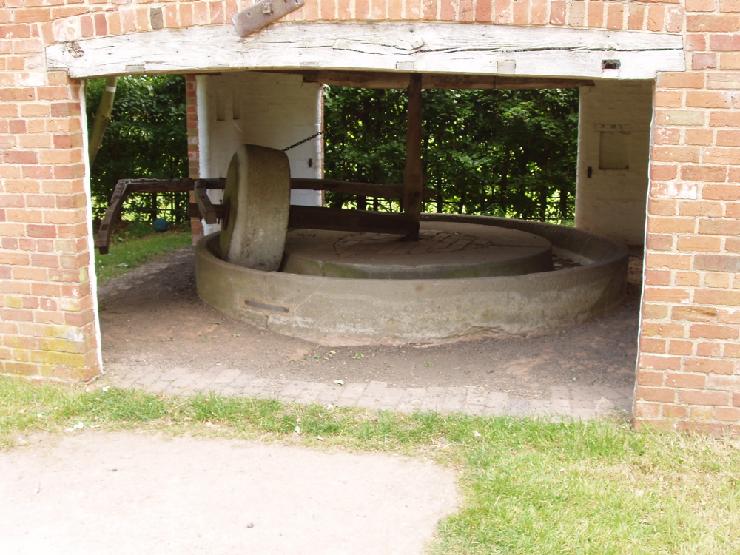
Avoncroft
A cider mill with crushing wheel.
|
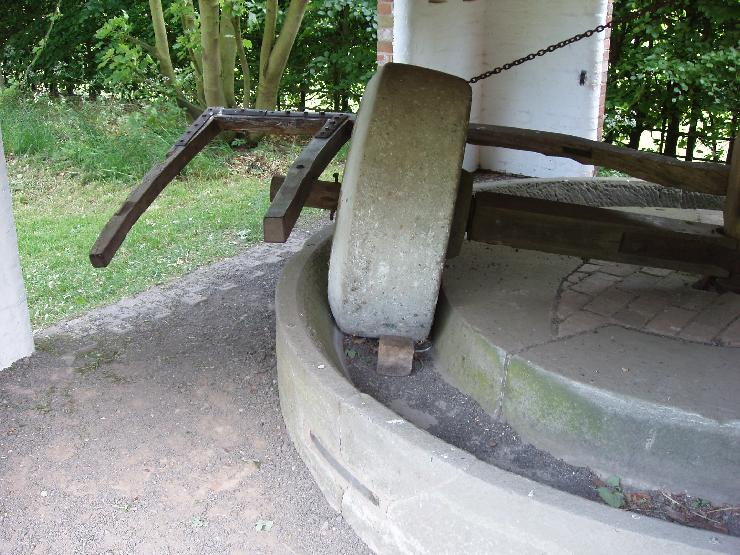
Avoncroft
The Avoncroft cidermill here seen from the edge of the runner stone. Apples would be put in the trough and the runner stone run around in circles, thus pulping them for pressing in the cider press.
|
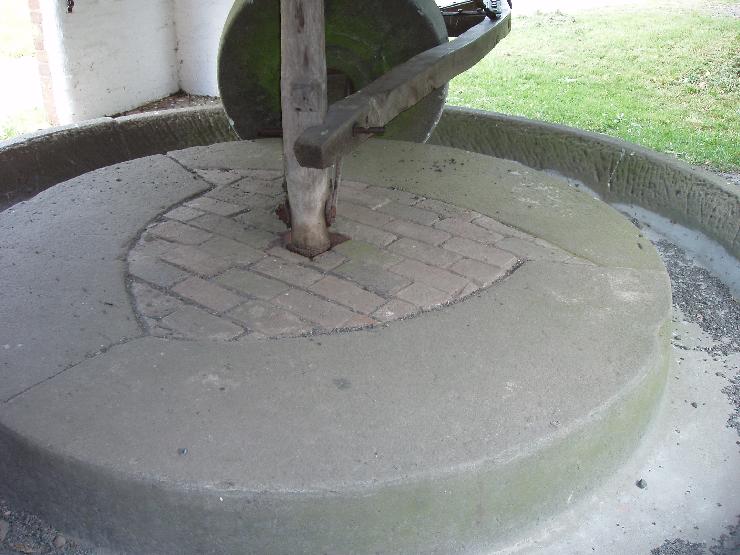
Avoncroft
Here you can see that the cider millstone is made up of a number of carefully joined stones, all made smooth and circular.
|
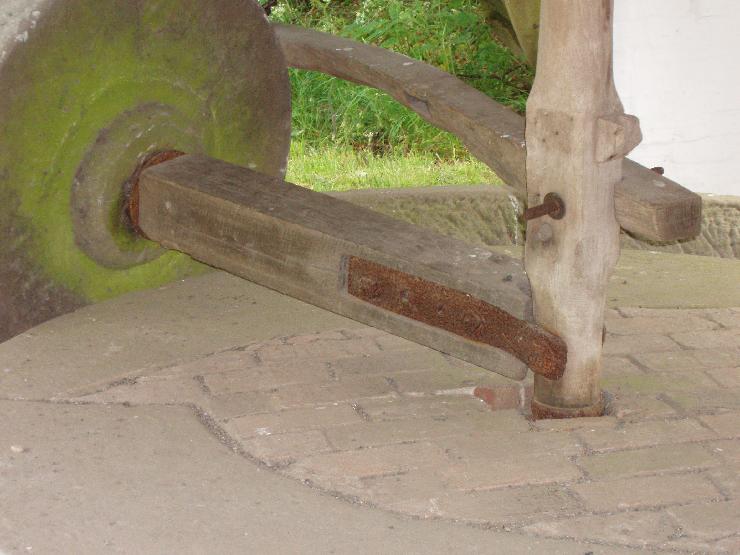
Avoncroft
The guide bar for the runner stone is reinforced by an iron strap. These runner stones could be driven by human or animal power.
|
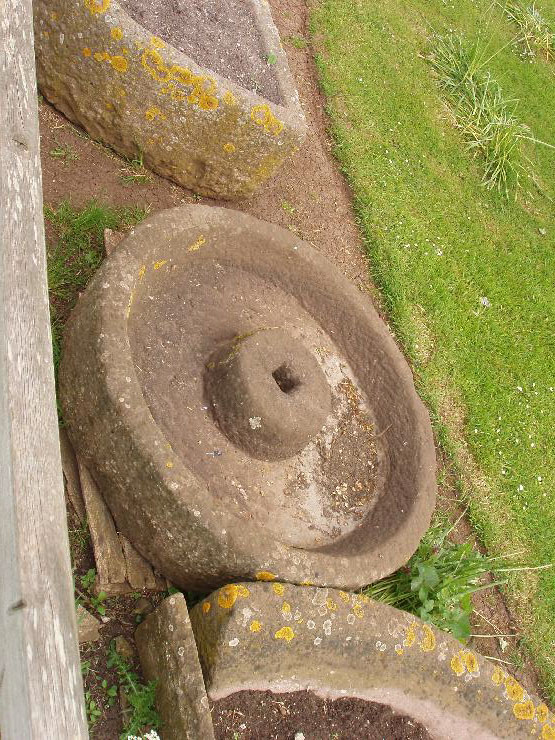
Tintern
View #1 of broken cider runner stones at Tintern abbey.
|
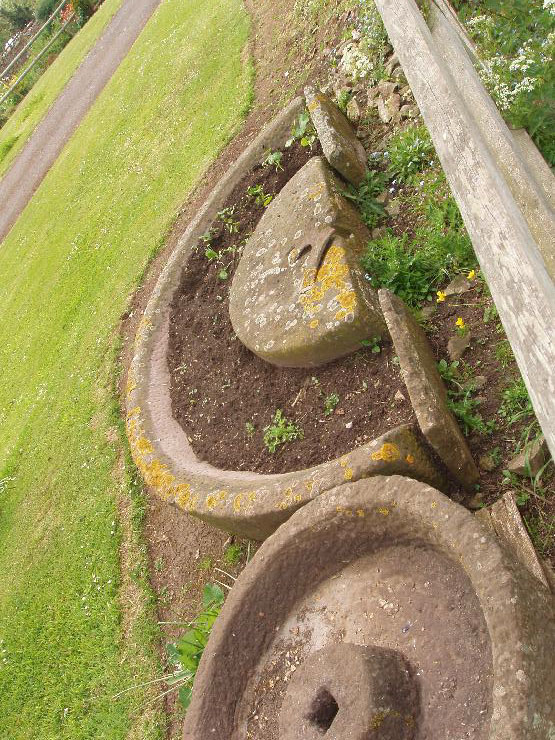
Tintern
View #2 of broken cider runner stones at Tintern abbey.
|
|
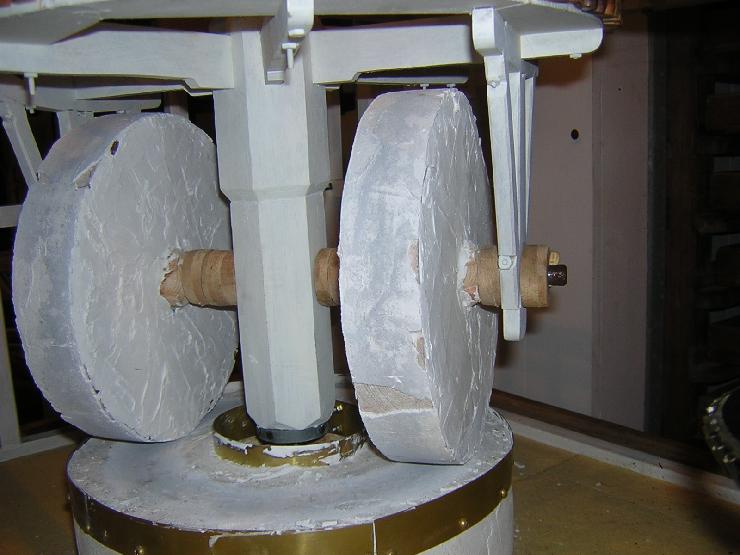
Faversham GP Mills
A mechanical system similar to a cider mill was a gunpowder incorporating mill, seen here at the restored Faversham works.
|
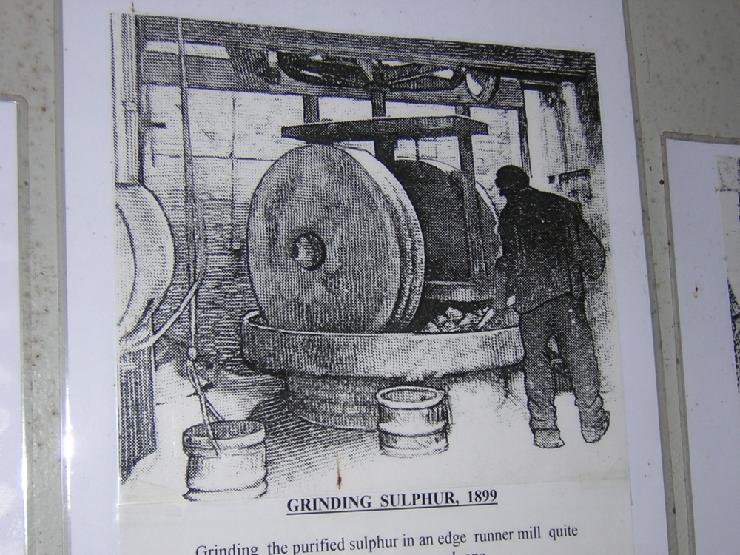
Faversham GP Mills
This rendering shows the incorporating mills as they would have appeared doing their job....
|
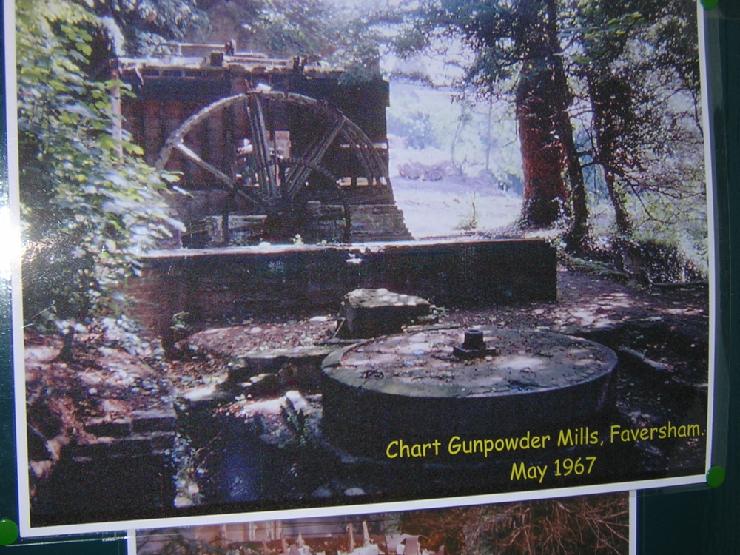
Faversham GP Mills
... and how they appeared before the restorations in the 1990s
|
Querns: 2 at West Blachington and one at Three Mills in London. These hand-powered querns were the alternative to using a water- or wind-powered mill to grind grain. They can still be purchased for the industrious among you.
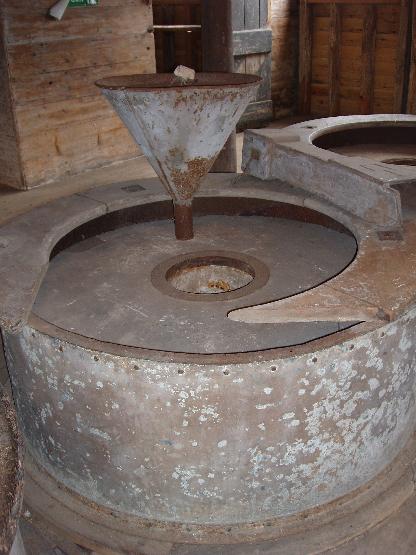
Three Mills
Here at Three Mills on the east end of London, you can see a working millstone with its covering case and hopper.
|
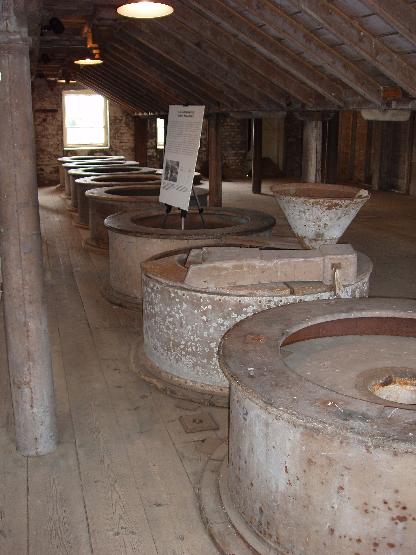
Three Mills
The series of millstones that became typical in later industrial-scale milling.
|
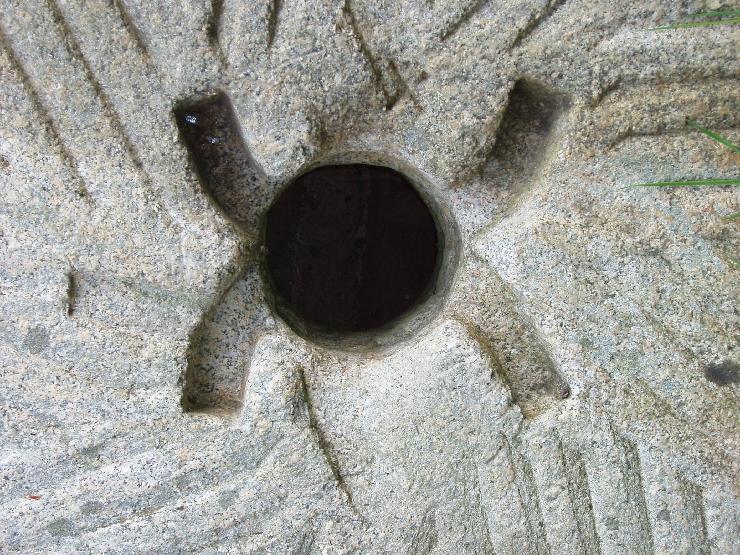
Daniels Mill
A closeup of the rynd slots in a millstone as well as the grinding furrows in the working face.
|
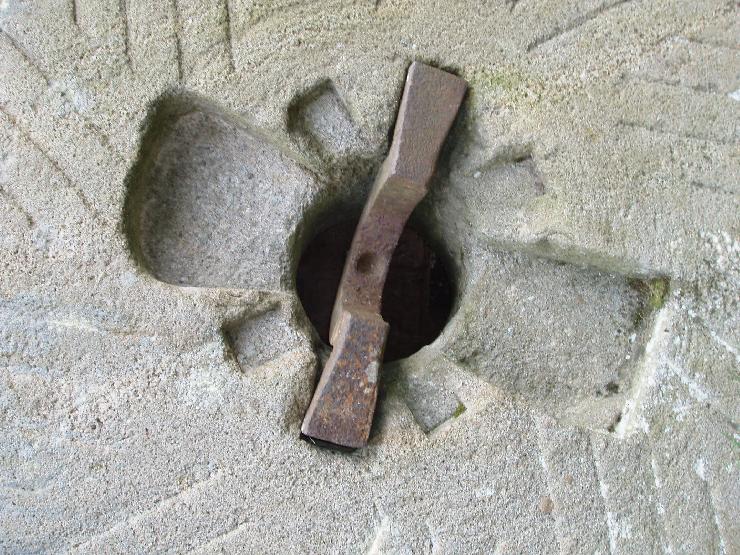
Daniels Mill
The third of a series of rhynds in place. You are looking at the bottom of a runner stone (the top one of the pair) and the dimple you can see on the iron rhynd sat on top of an iron pintle which was the rotation point for the stone.
|
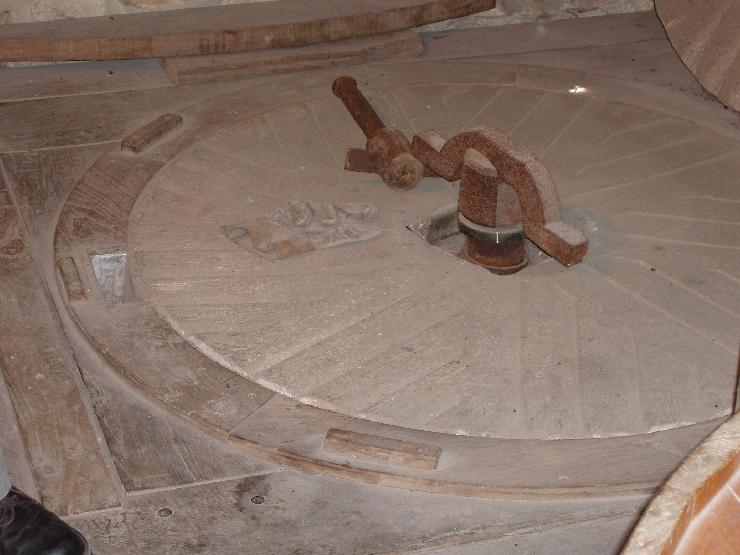
W & D
A nice view of the bedstone with runner stone removed. You can see the rhynd in place on top of the bearing and a bick and glove on the surface where the miller is resurfacing the bedstone.
|
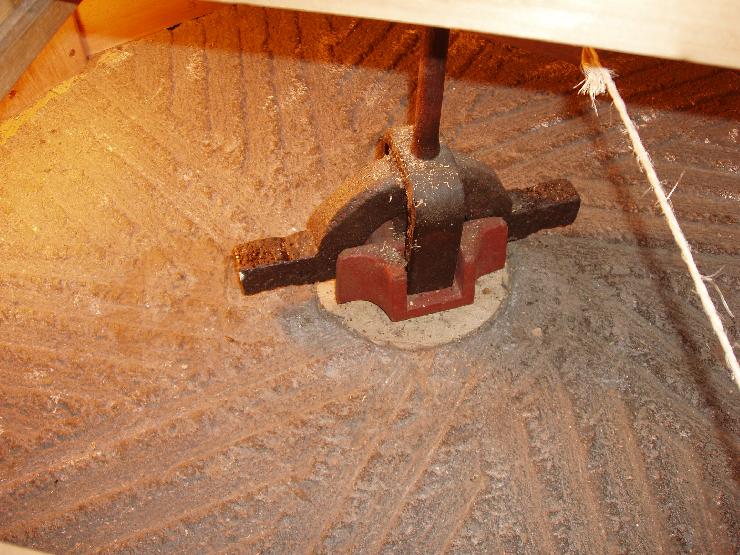
Daniels Mill
Another view of a rhynd in place with runner stone removed.
|
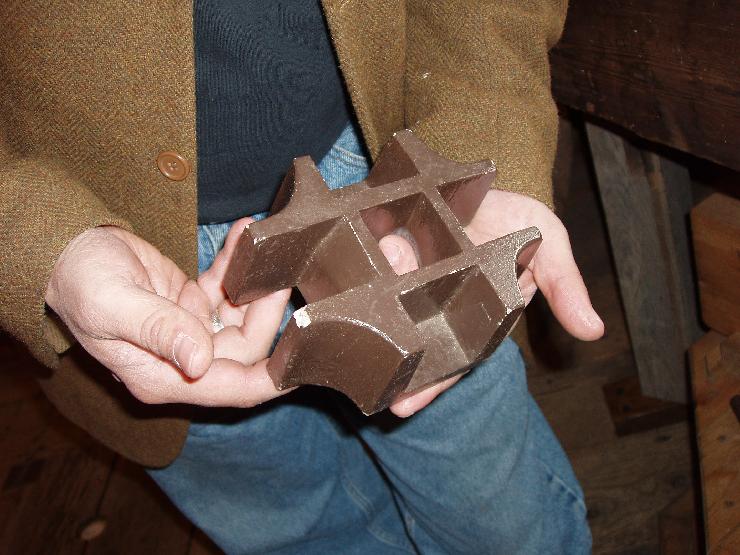
West Blachington
View #1 of the cast iron rhynd support from West Blachington
|
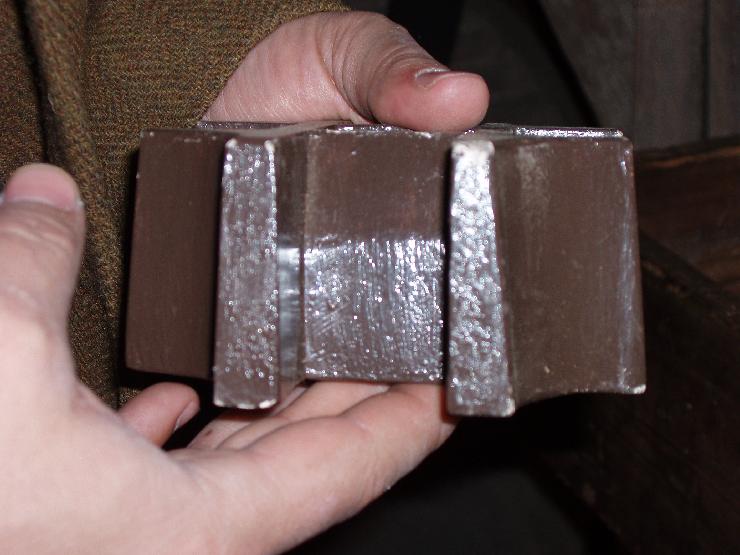
West Blachington
View #2 of the cast iron rhynd support from West Blachington
|
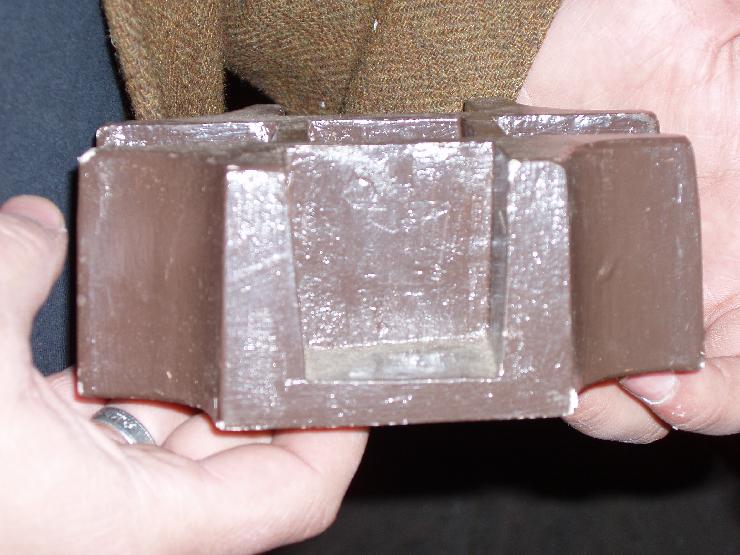
West Blachington
View #3 of the cast iron rhynd support from West Blachington
|
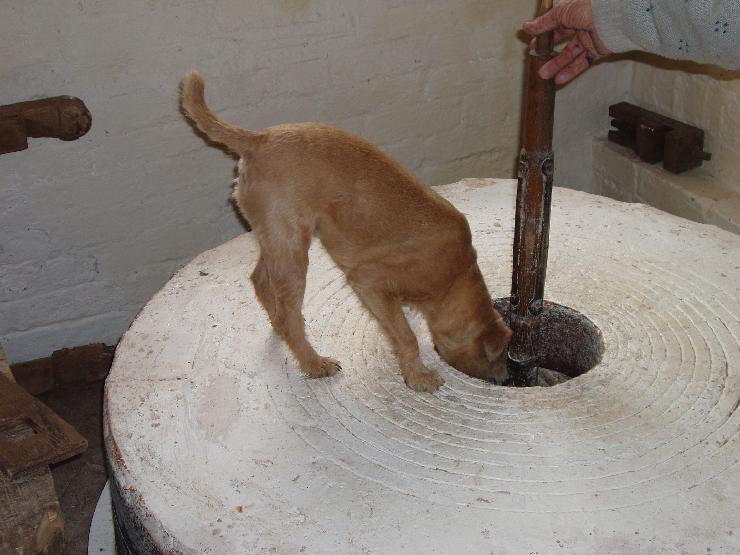
Daniels Mill
He's not unreasonably curious — mice love to scurry down the holes to look for grain when the mills are not running.
|
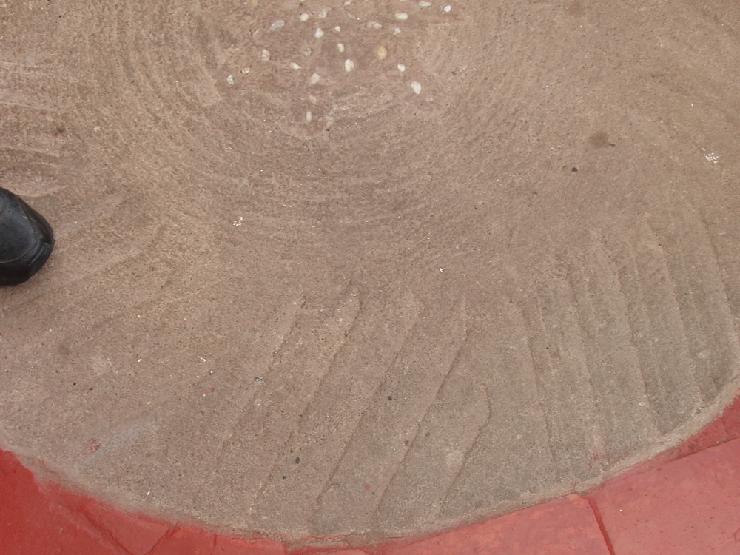
Daniels Stoop
A final view of what a millstone on your front stoop would look like.
|
|
 |
|
|



































